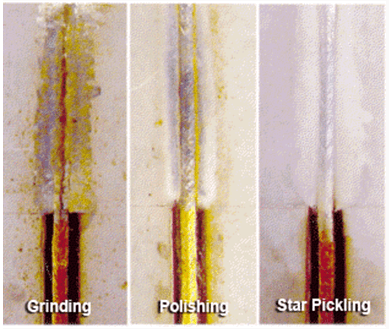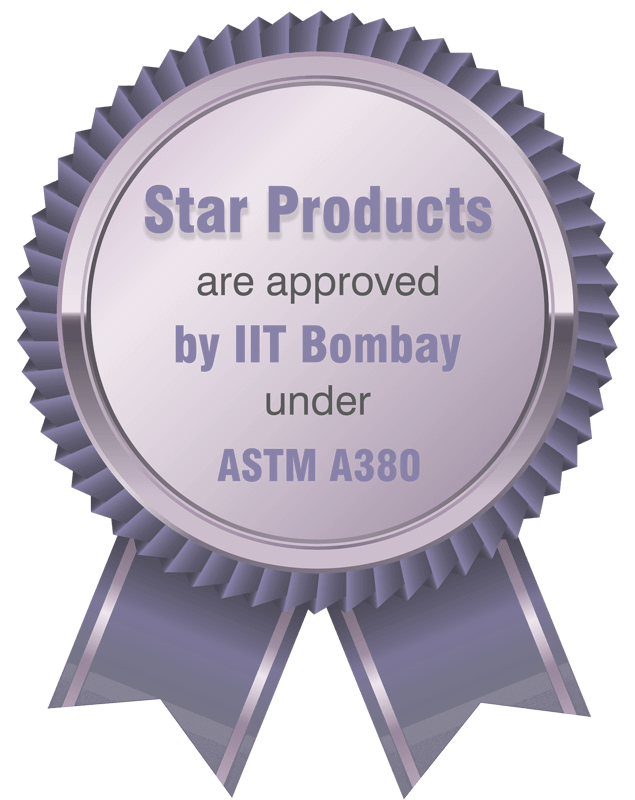PICKLING & PASSIVATION

Importance of Pickling & Passivation Stainless Steel
Pickling and Passivation process ensures corrosion resistance and removes free ion contamination left on the SS surface from fabricating and machinery. These contaminants are prospective corrosion sites resulting in premature corrosion, ultimately resulting in decline of component if not removed.
Corrosion resistance of SS is because of the presence of 13 percent chromium in alloy. The chromium, with oxygen, forms a think chemically resistant passive layer of chromic oxide thus shielding the SS surface against corrosion. The passive layer generally forms again after abrasion. All mechanical treatments damage the topmost layer of components i.e.
➱ Structural modifications in top layers of SS
➱ Development of in-built stress
➱ Contamination with ferritic matter
➱ Reduction of chromium content on top layer of SS
High temperature applications such as annealing and welding make the SS surface oxide scaly and discoloured. This reduces the value of Stainless Steel by appearance and lower corrosion resistant because of ferric oxide. Because of these contaminations, the preventive layer of chromium layer fails to form at a given spot and corrosion stain mounts up on insufficiently passivated SS.
Proper pickling and passivation of SS and weld seams offers qualities such as : ➱ Smooth surface that is metallically pure and free from scaling and discolouration
➱ Good and decorative metallic appearance
➱ Improved corrosion resistance of Stainless Steel components
➱ Optimum restoration of chromium oxide passive layer

⊛ How is Pickling Done ?
Depending upon the shape and size, the components that need pickling are either dipped in pickling bath or pickle solution is enforced onto the metal surface. The procedure may take few minutes to few hours at a room temperature so that it functions well and then rinsed thoroughly with water.
The active chemicals comprise of blended acids that leads to removal of the surface layer of components from 1-3 microns. Discolouration and oxide scale, surface contamination and ferrites are attacked and removed. The actual passive film is formed at the time of rinsing and when exposed to breeze.







